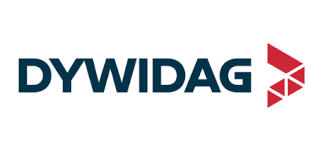Sports Event Management Software
Published Date: 29 September 2025 | Report Code: sports-event-management-software
Sports Event Management Software Market Size, Share, Industry Trends and Forecast to 2033
This comprehensive report on the Sports Event Management Software market provides insightful analysis covering market trends, competitive landscape, regional performance, segmentation details, and future growth forecasts from 2024 to 2033. It encompasses data-driven insights, advanced technological innovations, and evolving industry practices shaping the market’s global progress.
| Metric | Value |
|---|---|
| Study Period | 2024 - 2033 |
| 2024 Market Size | $1.50 Billion |
| CAGR (2024-2033) | 7.3% |
| 2033 Market Size | $2.88 Billion |
| Top Companies | TechSports Solutions Inc., EventMaster Technologies |
| Last Modified Date | 29 September 2025 |
Sports Event Management Software (2024 - 2033)
Sports Event Management Software Market Overview
Customize Sports Event Management Software market research report
- ✔ Get in-depth analysis of Sports Event Management Software market size, growth, and forecasts.
- ✔ Understand Sports Event Management Software's regional dynamics and industry-specific trends.
- ✔ Identify potential applications, end-user demand, and growth segments in Sports Event Management Software
What is the Market Size & CAGR of Sports Event Management Software market in 2024?
Sports Event Management Software Industry Analysis
Sports Event Management Software Market Segmentation and Scope
Tell us your focus area and get a customized research report.
Sports Event Management Software Market Analysis Report by Region
Europe Sports Event Management Software:
Europe continues to be a significant player in this market, driven by a blend of historical sporting culture and modern digital transformation initiatives. Adoption of sports event software is propelled by government support, R&D investments, and strategic collaborations between tech firms and sports organizations, leading to an upward market trend.Asia Pacific Sports Event Management Software:
In the Asia Pacific region, increasing urbanization and a growing emphasis on sports have created favorable conditions for market expansion. Investments in digital infrastructure and widespread adoption of mobile technologies are accelerating software takeover in sports event management, with notable growth potential observed between 2024 and 2033.North America Sports Event Management Software:
North America remains a mature market with a high rate of technology penetration. The region benefits from strong financial investments, well-established event management practices, and significant spending on innovation. Continuous developments in AI and data analytics are further cementing its leadership in the sector as the market scales between 2024 and 2033.South America Sports Event Management Software:
South America is emerging as a promising market, driven by rapid digitization and a passion for sporting events. Economic reforms and increased investments in sports infrastructure have promoted the adoption of management software solutions. The region is witnessing gradual growth with efforts to modernize event operations.Middle East & Africa Sports Event Management Software:
In the Middle East and Africa, rapid urban development and increasing investment in sports have spurred the adoption of advanced event management systems. With a keen focus on improving operational efficiency and enhancing spectator experience, the region is witnessing steady forecasts, supported by rising government initiatives and private sector participation.Tell us your focus area and get a customized research report.
Sports Event Management Software Market Analysis By Product
Global Sports Event Management Software Market, By Product Market Analysis (2024 - 2033)
The by-product segmentation primarily distinguishes between software and hardware solutions. Software, holding a significant market share, drives the consumer interface and backend operations, while the hardware component supports functionalities in areas such as ticketing and venue management. As the market matures, improved integration between software applications and hardware equipment is expected to drive efficiency and enhance user engagement.
Sports Event Management Software Market Analysis By Application
Global Sports Event Management Software Market, By Application Market Analysis (2024 - 2033)
Application segmentation covers a broad spectrum including public, private, and non-profit sectors. Each application category has unique use-case scenarios ranging from large-scale sporting events to local community gatherings. The market analysis reveals that the public sector often leads in adoption due to extensive event planning requirements, whereas the private segment focuses on optimizing operational expenditures. Non-profit organizations are increasingly harnessing these technologies to drive community engagement and outreach initiatives.
Sports Event Management Software Market Analysis By Deployment Mode
Global Sports Event Management Software Market, By Deployment Mode Market Analysis (2024 - 2033)
Deployment mode segmentation evaluates the distinction between on-premises, cloud, and hybrid models. On-premises solutions offer high control and security, making them popular in regions with stringent data regulations. Cloud-based solutions, however, provide scalability and cost-effectiveness, attracting small to medium enterprises, while hybrid models combine the benefits of both, ensuring flexibility, resilience, and tailored performance based on specific operational needs.
Sports Event Management Software Market Analysis By User Type
Global Sports Event Management Software Market, By User Type Market Analysis (2024 - 2033)
The by-user type segmentation segments the market into event organizers, participants, and spectators. Event organizers are at the forefront, leveraging these systems to streamline event logistics and improve engagement metrics. Participants benefit from features such as real-time updates and personalized notifications, while spectators enjoy enriched viewing experiences through integrated digital services. The balance between these user types ensures that solutions are designed with a broad spectrum of functionalities and accessible design features.
Sports Event Management Software Market Analysis By End User
Global Sports Event Management Software Market, By End-User Market Analysis (2024 - 2033)
End-user segmentation breaks down the market into sports leagues, amateur sports, corporate events, community events, and emerging phenomena like eSports. Sports leagues focus on managing large-scale tournaments and fan engagement, while amateur sports drive local community participation. Corporate events require streamlined event registration and feedback systems, and community events maximize local participation and sponsorship opportunities. eSports, as an evolving segment, highlights the adaptability of event management software to virtual and hybrid event formats.
Sports Event Management Software Market Trends and Future Forecast
Tell us your focus area and get a customized research report.
Global Market Leaders and Top Companies in Sports Event Management Software Industry
TechSports Solutions Inc.:
TechSports Solutions Inc. is a leading provider known for its innovative software platforms that integrate real-time analytics, mobile ticketing, and streamlined event operations. The company’s continuous investment in R&D has positioned it as a global market leader with a reputation for enhancing operational efficiency and improving user experience.EventMaster Technologies:
EventMaster Technologies has carved a niche in the Sports Event Management Software industry with its robust and user-centric solutions. Their platforms offer end-to-end services from event planning to post-event analytics, making them a preferred partner for sports leagues and major event organizers globally.We're grateful to work with incredible clients.









FAQs
What is the market size of sports Event Management Software?
The sports event management software market is projected to reach $1.5 billion by 2024, growing at a CAGR of 7.3%. This growth reflects increasing investments in technology to enhance sports event logistics and management.
What are the key market players or companies in this sports Event Management Software industry?
Key players include companies like Active Network, Eventbrite, and Ticketmaster. These organizations dominate the market by offering innovative solutions tailored for event organizers in sports management, elevating user experiences and operational efficiency.
What are the primary factors driving the growth in the sports Event Management Software industry?
Growth is driven by rising digital transformation in event management, increasing demand for real-time analytics, and the need for streamlined ticketing processes. Moreover, the expansion of eSports and corporate events further fuels market demand.
Which region is the fastest Growing in the sports Event Management Software market?
North America is the fastest-growing region, projected to grow from $0.53 billion in 2024 to $1.03 billion by 2033, witnessing substantial growth due to high adoption rates of digital management solutions among sports organizations.
Does ConsaInsights provide customized market report data for the sports Event Management Software industry?
Yes, ConsaInsights offers customized market reports tailored to specific needs in the sports event management software sector, ensuring stakeholders receive insightful, relevant, and actionable data for informed decision-making.
What deliverables can I expect from this sports Event Management Software market research project?
Expect comprehensive reports that include market analysis, forecasts, segmentation data, competitive landscape, growth trends, and actionable insights tailored to your specific business requirements within the sports event management software industry.
What are the market trends of sports Event Management Software?
Current trends include increased automation of ticketing processes, the rise of cloud-based solutions, and enhanced user experiences via mobile applications. Additionally, there’s a growing focus on sustainability and eco-friendly practices in sports events.
